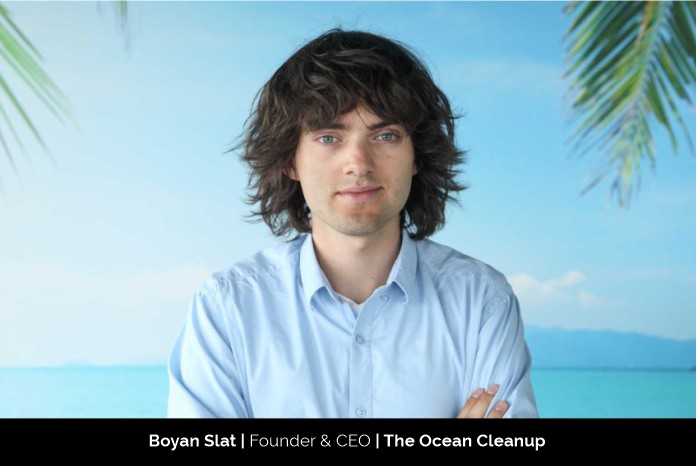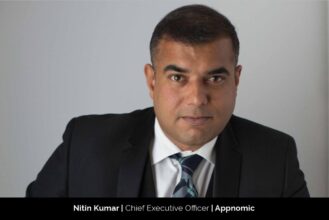Making Oceans Free from Plastic
Beyond's 10 Most Influential Business Leaders to Watch Out in 2020

It’s estimated that
between five and 14 million tons of plastic enter the oceans from land every
year. The Ocean Conservancy charity has warned that in the next decade the
world’s oceans could hold one kilo of plastic for every three
kilos of fish. Plastic acts
like a sponge, absorbing toxins in the water. When consumed by marine and
wildlife, it can cause them to become sick and die, or, broken into tiny
pieces, it may end up in the stomachs of fish—some of which humans may
eventually eat. Some 267 different species are known to have suffered from
entanglement or ingestion of marine debris, including seabirds, turtles, seals
and whales.
Every year, between five and 14 million tons of plastic are
estimated to enter the oceans from land. The Ocean Conservancy Charity has
advised that the oceans around the world could hold one kilo of plastic per
three kilos of fish in the next decade. Plastic acts as a sponge, absorbing
water toxins. It can cause them to get sick and die when eaten by marine and
fauna, or, broken into small bits, it may end up in the stomachs of fish— some
of which humans may ultimately consume. Some 267 distinct species, including
seabirds, tortoises, seals and whales, are known to have suffered from
entanglement or ingestion of marine debris. The plastic pollution has been a
real threat to our environment for a while now and the time to act on it is
already upon us. Every individual has to take responsibility or we are doomed
to face a much bigger environmental crisis in the times to come.
An inspiring journey
of a young man
Such is the story of a young man who saw the problem and
decided to do something about it. In 2011, then 16-year-old Boyan Slat was
diving in Greece and was shocked to see more plastic than fish. Disturbed Boyan
decided to explore oceanic plastic pollution and the difficulties of cleaning
it up for a high school science project with a friend. He remained fascinated
by the problem and continued working on his passive clean-up concept during his
freshman year at university. This eventually led him to start The Ocean Cleanup
a non-profit organization, developing advanced technologies to rid the world’s
oceans of plastic.
Developing the first
realistic method to free the world’s oceans from plastic
The Ocean Cleanup is designing and developing the first realistic
method to free the world’s oceans from plastic. Every year, millions of tons of
plastic enter the ocean. A significant percentage of this plastic drifts into
large systems of circulating ocean currents, also known as gyres. Once trapped
in a gyre, the plastic will break down into micro plastics and become
increasingly easier to mistake for food by sea life.
Going after it with vessels and nets would be costly,
time-consuming, labor-intensive and lead to vast amounts of carbon emission and
by-catch. That is why The Ocean Cleanup is developing a passive system, moving
with the currents – just like the plastic – to catch it. The floater provides
buoyancy to the entire system, while the skirt prevents debris from escaping underneath.
A cork line above the skirt prevents overtopping and keeps the skirt afloat. As
the system moves through the water, slower than the plastic, the plastic
collects within the boundaries of the U-shaped system.
The systems move faster than the plastic, owing to the
influence of wind and waves on the system; these forces do not affect the
plastic as much as the system, because the plastic floats mainly just below the
surface. Thanks to the systems’ faster pace, the cleanup system is able to
catch up with the plastic, like a Pac-Man, and concentrate it in its U-shape. A
support vessel then empties the systems every 6-8 weeks.
Leveraging
technological innovation to solve the environmental problem
The Ocean Cleanup’s aim is to use technological innovation
to clear up the plastic currently floating in the so-called Great Pacific
Garbage Patch, and the other places in the world’s oceans where ‘gyres’, or
slowly rotating currents, trap huge amounts of plastic waste. Boyan’s plan is
to recycle the plastic and turn it into feedstock for new durable products. By
deploying a fleet of systems, The Ocean Cleanup has estimated to be able to
remove 50% of the Great Pacific Garbage Patch in just five years’ time. The
concentrated plastic will be brought back to shore for recycling and sold to
B2C companies. He hopes to be able to fund the expansion of this cleanup, from
the North Pacific gyre to the other four gyres, with the help of this revenue.
Some of the plastic of lower quality might also be turned into energy.
Making progress
towards the end goal
In preparation for full-scale deployment, The Ocean Cleanup
organized several expeditions to map the plastic pollution problem in the Great
Pacific Garbage Patch to an unprecedented degree of detail. The team
simultaneously advanced its design through a series of scale model tests,
including prototypes deployed in the North Sea 2016, 2017 and 2018. On
September 8, 2018, from San Francisco Bay, the first cleanup system towed to
the Great Pacific Garbage Patch. After known retention issues and a structural
fracture, System 001 returned to shore after a four-month deployment. Following
a root cause analysis, redesign, procurement, and assembly, System 001/B was
then deployed in June 2019.
The inventor who
ventured to find a solution to the need of the hour
Boyan has been an inventor since birth. Owing to his establishment of The Ocean Cleanup at the age of 18, he became the youngest ever recipient of the UN’s highest environmental accolade and Champion of the Earth in 2015. Furthermore, he was awarded the maritime industry’s Young Entrepreneur Award in 2015 by HM King Harald of Norway. He was also chosen as European of the Year by Readers Digest in 2017 and a Member of the Thiel Fellowship. Along with Boyan, The Ocean Cleanup’s team consists of more than 80 engineers, researchers, scientists and computational modelers working daily to rid the world’s oceans of plastic. The organization’s headquarters are located in Rotterdam, the Netherlands and the team is working round to clock to make their dream a reality – plastic free oceans.











